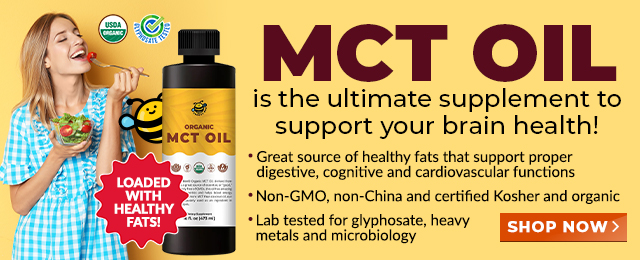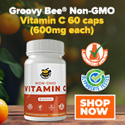
Pu-erh Tea is a Chinese Cholesterol Remedy and Overall Health Tonic
Saturday, August 01, 2009 by: Zephyr Faegen
Tags: Pu-erh, health news, Natural News
- Newly released JFK files reveal Pentagon's role in creating Lyme disease and covid in the same lab
- Here are TEN all-natural ways to protect your garden without using harmful chemicals
- Ginseng's hidden anti-aging power: How compound K is rewriting the rules of skincare
- “Endgame: The Hidden Agenda 21” unveils a world of conspiracy and control
- L.A.'s rebuilding nightmare: Only 4 permits issued after fire destroys 6,000 homes
- Scientists demand FDA withdraw mRNA COVID vaccines amid contamination and gene therapy concerns
- Senate Democrats deny censorship industrial complex existed, defend government's role in silencing dissent
- “The shame of Minnesota”: Somali immigrants behind $250 million child nutrition fraud in largest COVID-era scam
- Former Congresswoman exposes CCP's deep infiltration of California through universities, ports, and fentanyl
- Dr. Suzanne Humphries makes bombshell appearance on Joe Rogan podcast, exposing vaccine industry deception back to POLIOMYELITIS
- PROCESSED TABLE SALT in foods found to fuel depression
- Despite surge in MMR vaccination in Texas, measles outbreaks continue: Is VACCINE SHEDDING fueling the spread?
- Chewing gum's dirty secret: How your daily habit could be flooding your body with microplastics
- BPA: The hidden hormone disruptor sabotaging your health - and how to fight back
- “Independent” anti-Russia outlet MEDUZA faces COLLAPSE as US funding dries up
- Embracing the wild: A deep dive into Jim Cobb’s “Backwoods Survival Guide”
- The hidden battle in your glass: How A1 and A2 milk could shape your health
- Nomi Prins reveals how central bankers reshaped the global economy in “Collusion”
- Newly released JFK files reveal Pentagon's role in creating Lyme disease and covid in the same lab
- Analysis: The coming economic collapse, a mass uprising and Trump's three secret weapons to halt the growing revolt
- Festive flavors: The sweet history, nutritional profile and health benefits of pecan pie
- Elon Musk: Aliens could be here on Earth RIGHT NOW
- Trump reverses course on Gaza plan, says “nobody is expelling Palestinians”
- Big Pharma's $8 Billion bribery scheme exposed: how doctors are pushed to prescribe junk science, not heal
- Boys are back in town: Trump’s patriotic alpha crew takes the wheel while toxic females ride in the backseat
- Reclaim your health: How midlife exercise reverses years of inactivity
- A lack of integrity in Academia: Harvard professor found GUILTY of fraudulent research to promote CRT theory
- Survival 101: Effective EMF blocking techniques
- EPA advisor admits the agency is funneling billions to climate groups ahead of Trump’s return to White House
- Dr. Mike Yeadon releases 15-minute testimony - WATCH - about genocidal intent of COVID “vaccines”
- 5 Simple steps to boost your brainpower: How to strengthen executive function in a distracted world
- Florida takes a stand: DeSantis proposes permanent ban on mRNA vaccine mandates
- Sugarcane extract superior to cholesterol-lowering drugs?
- Mike Adams Sermon 66: God will DESTROY ISRAEL for its wickedness
- Pilots report mysterious lights 'moving at extreme speeds' across Oregon skies
- Space war brewing? Russia threatens to destroy Starlink satellites
- EPA advisor admits the agency is funneling billions to climate groups ahead of Trump’s return to White House
- California's social media censorship law struck down: A victory for free speech or a threat to online safety?
- The Health Ranger releases “Vaccine Zombie” song and music video, using AI-animated zombies for the music video
- Dr. Mike Yeadon releases 15-minute testimony - WATCH - about genocidal intent of COVID “vaccines”
- The pandemic as a tool for INDOCTRINATION: Understanding “The Indoctrinated Brain” by Dr. Michael Nehls
- Newly released JFK files reveal Pentagon's role in creating Lyme disease and covid in the same lab
- Florida takes a stand: DeSantis proposes permanent ban on mRNA vaccine mandates
- Mike Adams releases country western hit single: Goin’ Back in Time is Comin’ Home
- Mike Adams releases music poetry sensation: A Child of God
- “Why we influenced the 2020 elections”: Facebook files reveal the coordinated effort to bury the Hunter Biden laptop story
- Unpacking the Lies That We’ve Been Fed – new song and music video released by Mike Adams, the Health Ranger
- RFK Jr. clears key hurdle: Sen. Susan Collins backs controversial HHS nominee, signaling a new era for health policy
- Mike Adams releases new song and music video: Nothing More Disgusting Than a Globalist
- Michigan sheriff announces criminal investigation into 2020 election crimes, Dominion Voting Systems
- Israeli soldiers accused of even more torture and abuse in the West Bank
- Migrants are taking advantage of recent hurricanes to scam residents and loot their homes
- House Intelligence Committee calls for the ARREST and PROSECUTION of Dr. Anthony Fauci
- Rep. Nancy Mace introduces bill to ban biological males from female facilities on federal property
- Red Cross issues warning to stop blood plasma donations from vaccinated people
- Scientists confirm: GENIUS brain function can be spontaneously unleashed in humans without any apparent cause
- EPA advisor admits the agency is funneling billions to climate groups ahead of Trump’s return to White House
- HYSSOP: What research reveals about the health benefits of this ancient holy herb
- Two containers with completed ballots fall out of truck in Florida
- Fully vaccinated about to see “tsunami” of illness and death, warns virologist
- Global leaders unite to clamp down on “misinformation” with UN-backed Cascais Declaration
- BREAKING: 2025 NDAA authorizes mandatory military draft of WOMEN across America… as Pentagon pursues global NUCLEAR war with both Russia and China at the same time
- Michael Yon warns of a ZIONIST TAKEOVER in Trump’s second administration
- BOMBSHELL: DNA testing kits are a SCAM to develop ethnic-specific bioweapons
- Ozempic and Wegovy weight loss drugs are injectable LIZARD VENOM PEPTIDES that may unleash a devastating wave of organ failure… side effects align with symptoms of SNAKE BITES
- Israeli soldiers accused of even more torture and abuse in the West Bank
- These 13 countries just signed an agreement to engineer a global FAMINE by destroying food supply
- NASA admits that climate change occurs because of changes in Earth’s solar orbit, and NOT because of SUVs and fossil fuels
- RFK Jr. clears key hurdle: Sen. Susan Collins backs controversial HHS nominee, signaling a new era for health policy
- Sermon 30: How Jesus reveals Caesar’s FAKE CURRENCY and FALSE AUTHORITY
- Coriander seeds: Ancient medicine backed by modern science
- Arizona officials claim Maricopa County needs 10-13 days to tabulate results of the election
This maocha, meaning "rough tea", is then taken and put through one of two processes. Either it is immediately pressed into tea cakes where it is then classified as "raw/green pu-erh" or it is put through an artificial aging process for 30 to 40 days where daily the leaves are turned, splashed with water, covered with cloth, and then left to ferment. After this fermenting stage, the tea is then dried and pressed into tea cakes and classified as "cooked/black pu-erh". Traditionally, the tea was always pressed raw and then vaulted for up to 100 years to gain this fermented status, but this modern process of fermentation was developed by the Kunming Tea Factory in 1975 for economic reasons.
Pu-erh Tea has been used in traditional Chinese medicine for generations to inhibit "internal dampness" (a term used in Chinese medicine to describe a build up of internal energy due to the spleen`s inability to transform energy that it receives from the stomach) and to invigorate the activity of the spleen and stomach. Other traditional uses include the removal of toxins from the body, curing dysentery, weight loss, improving eyesight, promoting blood circulation and reviving those who have over indulged in alcohol.
More recently, researchers have taken interest in Pu-erh tea for its ability to reduce cholesterol, lower blood pressure, protect connective tissue, and its ability to attack free radicals within the body. In multiple studies done in several countries, pu-erh tea has shown significant success in reducing blood cholesterol. One study done at the Wun-Shan Branch Tea Research and Extension Station in Taipei, Taiwan compared the effects of green, black, oolong, and cooked/black pu-erh teas on cholesterol in rats. The study showed the rats fed the cooked pu-erh tea leaves had an increase of HDL-C (good cholesterol) and a decrease in LDL-C (bad cholesterol) where the rats given the other teas had varying decreases in both types. This means that with pu-erh tea you get the best of both worlds, an increase in the cholesterol that you do want and a decrease of the cholesterol that you don`t.
At China`s Kunming Medical College, another study that consisted of 86 patients with unusually high levels of blood cholesterol examined the differences in the treatment of patients with Pu-erh tea verses conventional cholesterol medication. 55 of the patients were given a regimented dose of pu-erh tea three times a day; the other 31 were given a cholesterol lowering drug called PCIB in doses of 1/2 a gram 3 times a day. At the end of a two month period, the patients drinking the Pu-erh tea showed a 64.29% reduction in blood cholesterol levels in comparison to 66.67% for the group taking PCIB. Cholesterol is not the only benefit that pu-erh tea has to offer though. In 2006, a study found that it has anti-aging and anti-cancerous properties by attacking free radicals within the body as well as actively protecting human fibroblast cells (connective tissue) from damage and deterioration
Pu-erh Tea is truly a wonder tonic but one must be careful when shopping for this sought-after tea. There are many knock-offs and fake pu-erh teas out there, and the older the tea, the more expensive it is. Sometimes tea cakes can sell for thousands of dollars. Another concern is for the quality of the tea leaf itself. Many of the cheaper teas can contain fluorine which, when ingested over a period of time, can lead to fluorosis or fluoride poisoning. When you are looking for a good pu-erh tea make sure that you are dealing with a reputable tea house or seller, make sure that the tea is from the Yunnan province of China, and make sure that the packaging states that the Tea was cultivated from wild da ye or broad leaf tea trees. This may be a difficult task because most pu-erh teas today are cultivated from multiple trees and from different areas. In the end it`s really the fermentation process that gives pu-erh its distinctive taste and curative properties but if you`re a tea purist, good luck hunting down a true aged Pu-erh tea; it`s difficult and you might just pay an arm and a leg.
Today we are constantly battling the toxicity of our everyday environment and our potentially toxin laden food. Drinking pu-erh tea is a great way to eliminate free radicals within the body, lower your cholesterol and blood pressure, fight cancer, and possibly look a little younger one cup at a time. If you are interested in more information on Pu-erh, please look through the links below.
References:
Comparative studies on the hypolipidemic and growth suppressive effects of oolong, black, pu-erh, and green tea leaves in rats.
Kuo KL, Weng MS, Chiang CT, Tsai YJ, Lin-Shiau SY, Lin JK.
Journal of agricultural and food chemistry, 2005 Jan 26;53(2):480-9.
(http://www.ncbi.nlm.nih.gov/pubmed/15656692?...)
Pu-erh Tea Definition:
(http://en.wikipedia.org/wiki/Pu-erh_tea)
Chinese Natural Cures: Traditional Methods for Remedies and Preventions
Henry C. Lu.
Tess Press, 1994:14-15
Researches on Yunnan Tuocha Tea
http://www.tuochatea.com/researchs.htm
Free radical scavenging effect of Pu-erh tea extracts and their protective effect on oxidative damage in human fibroblast cells.
Jie G, Lin Z, Zhang L, Lv H, He P, Zhao B.
Journal of agricultural and food chemistry, 2006 Oct 18;54(21):8058-64.
(http://www.ncbi.nlm.nih.gov/pubmed/17032009?...)
About the author
Zephyr Faegen is first and foremost an individual who believes that the only way to instill real change is to go to the roots of the populace and instill real knowledge. A dedicated naturapath Zephyr has spent extensive time studying alternative toxin free living and the benefits of Naturopathic and Homeopathic medicine over Allopathic symptom based medicine. To view more of Zephyr's work and get current news please visit: http://www.apollonewsdaily.comZephyr currently resides in the America's.
If you have any questions or comments for Zephyr you can contact him through his email: zephyr@apollonewsdaily.com
Pu-erh at FETCH.news
Get independent news alerts on natural cures, food lab tests, cannabis medicine, science, robotics, drones, privacy and more.
Take Action: Support Natural News by linking to this article from your website
Permalink to this article:
Embed article link: (copy HTML code below):
Reprinting this article:
Non-commercial use OK, cite NaturalNews.com with clickable link.
Follow Natural News on Facebook, Twitter, Google Plus, and Pinterest
Science News & Studies
Medicine News and Information
Food News & Studies
Health News & Studies
Herbs News & Information
Pollution News & Studies
Cancer News & Studies
Climate News & Studies
Survival News & Information
Gear News & Information
News covering technology, stocks, hackers, and more



"Big Tech and mainstream media are constantly trying to silence the independent voices that dare to bring you the truth about toxic food ingredients, dangerous medications and the failed, fraudulent science of the profit-driven medical establishment.
Email is one of the best ways to make sure you stay informed, without the censorship of the tech giants (Google, Apple, Facebook, Twitter, YouTube, etc.). Stay informed and you'll even likely learn information that may help save your own life."
–The Health Ranger, Mike Adams












































